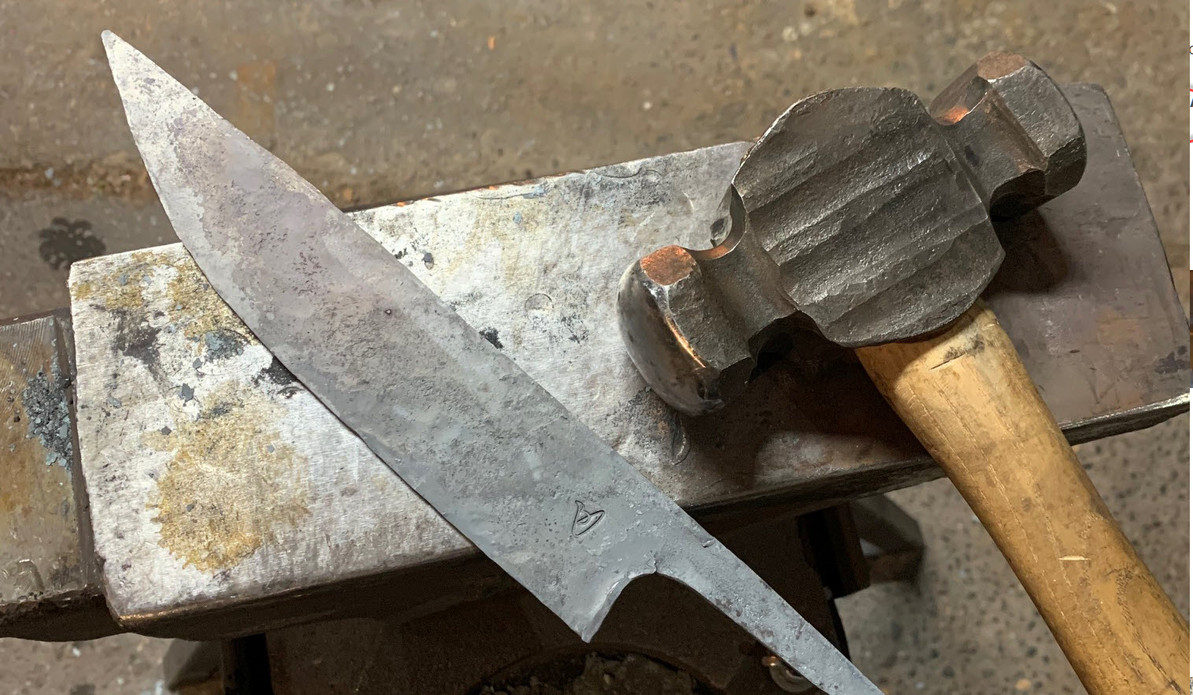Knife and Blade Steel - what steel should I buy?
Beginner introduction to blade steels
Steel is an alloy, meaning it is a mixed element or a recipe of elements if you will. Unlike iron which is just that - iron - all the way through, steel is a mix of different elements. This is the reason there are so many different steels, each with somewhat different strengths and weaknesses.
Mostly steel is iron with some added carbon, you might say steel is like re-inforced iron, making it stronger.
To further improve the steel, other components are added. To make the steel stainless, Chromium is added. To be called a "stainless" steel, there must be 13% or more Chromium in the steel.
There are many other elements that are added to steel to achieve other strengths, as well as adjusting the amount of carbon itself.
Some of the most popular blade steels are:
High Carbon 1084 steel:
1084 is probably the most popular blade steel amongst knife makers due to the combination of easy heat treatment and making good blades. It is not the latest uber steel but it creates great knives and take a good edge. Because 1084 is such a popular steel it is often available in a lot more sizes than other steels, handy if wanting to forge blades, axes, hammers etc and needing thicker stock.
1095 is another popular high carbon steel with somewhat better edge retention qualities than 1084 but with a less straight-forward heat treatment. The main reason 1095 is used - like W2 - is for the ability to get a hamon line if very accurately "failing" to heat treat the entire blade. For beginners - and many advanced bladesmiths - the steel to stick to is 1084 though, unless you are ready to start chasing hamons.
01 Tool Steel is another very popular carbon steel, due to the excellent edge retention qualitities. It will hold an edge longer than 1084 but again the heat treat requires more advanced processes than what is required for 1084 and other simple carbon steels like 1075 or 15N20.
Of the stainless blade steels, 12C27 is a very popular choice for both chef knives and outdoor style blades. This is again more about heat treatment than the actual steel. 12C27 make good knives, do doubt about that but there are many more modern steels that will out-perform 12C27 in performance tests. The beauty of 12C27 lies in that it can be heat treated at home in a gas forge/furnace as long as you have temperature control. Which often costs no more than $50-75 and a fire brick for partially closing the forge opening.
There are many excellent stainless blade steels like N690, 14C28N, RWL-34 and ELMAX to mention a few. But each of these require more advanced equipment and process control for heat treatment and are often not the best place to start for new makers.
Recent Posts
-
Why Bed The Tang In Epoxy - Then Knock it OFF Again.
What is "Bedding the tang"? Bedding the tang means gluing a stick-tang blade into the handle block i …21st Mar 2025 -
Marble Leather - How to Dip Dye Veg Tanned Leather
This was my first experiment with hydrodipping or dip dying leather, and it came out pretty cool! I …14th Mar 2025 -
Make Burl Wood POP!
Staining wood with leather dye. or "How to make burl wood really pop". This technique really only wo …8th Mar 2025




